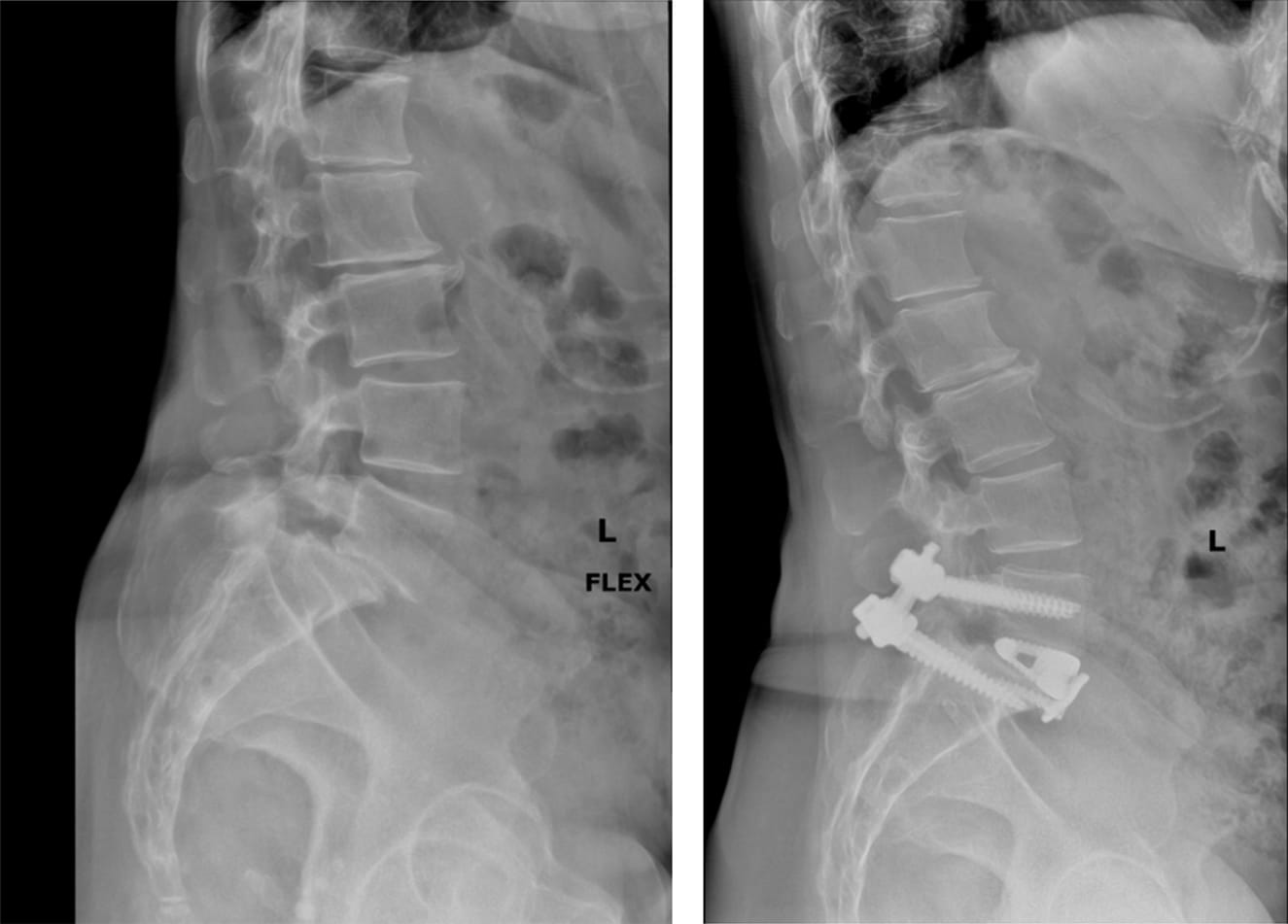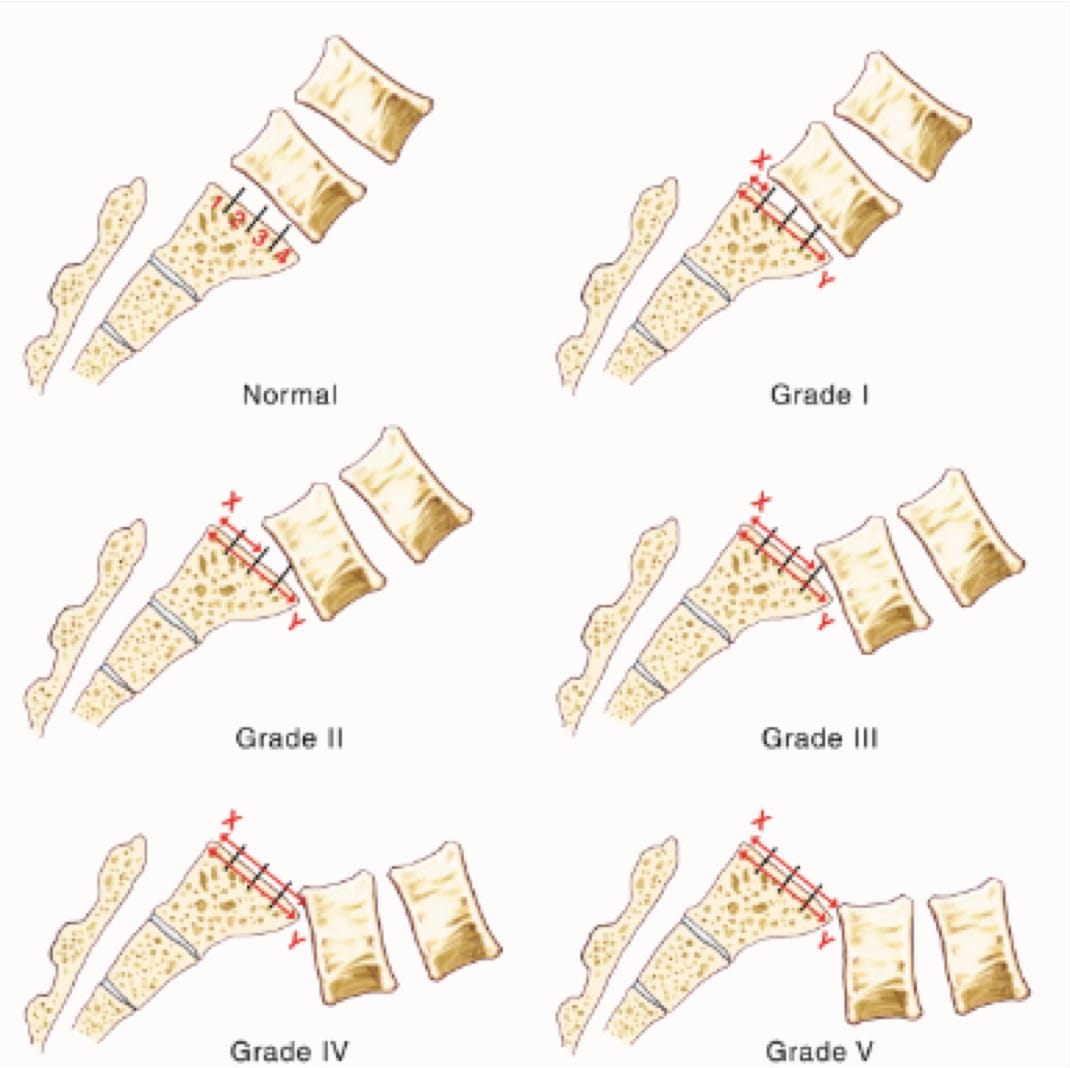Find expert care for spinal slippage at our Englewood practice.


Spondylolisthesis Care in New Jersey
Spondylolisthesis refers to the forward, backward, or sideways displacement of one vertebra relative to another, often leading to significant back pain and neurological issues. Unlike the commonly referenced “slipped disc”—which is not a term physicians typically use—spondylolisthesis is a genuine slippage of the vertebra that may narrow the spinal canal and affect nerve function.
We welcome you to contact our office in Englewood to schedule a consultation if you suspect spondylolisthesis or seek guidance on available treatment options.

Types of Spondylolisthesis
There are several different types of spondylolisthesis:
Isthmic Spondylolisthesis
This occurs when a fracture develops in the pars interarticularis, also called the isthmus, which helps connect the facet joints. Sports that involve repetitive stress on the lumbar spine or hyperextension can increase the risk of this fracture. If there is a fracture present but no slippage, it's called spondylolysis. Should the vertebra begin to slip due to the fracture, it becomes spondylolisthesis.
Degenerative Spondylolisthesis
Seen more commonly in older adults, degenerative spondylolisthesis emerges when arthritic changes in the facet joints, along with intervertebral disc wear, allow a vertebra to shift. Although slips in degenerative cases rarely exceed 50%, they can still cause significant pain and instability.
Congenital Spondylolisthesis
Some individuals are born with a spinal malformation that makes the vertebrae prone to misalignment. Over time, this structural anomaly may lead to a slip if not identified or managed early.
Pathological Spondylolisthesis
Infection, tumor growth, or other diseases (e.g., osteoporosis) can weaken the vertebrae enough to cause displacement.
Post-Surgical Spondylolisthesis
Vertebrae may shift out of position following certain spine surgeries.
Traumatic Spondylolisthesis
Direct trauma to the spine can fracture or displace the vertebrae, leading to spondylolisthesis.
Schedule a Consultation
Contact Us
Symptoms
Many patients describe heightened back pain while walking, leaning backward, or standing for prolonged periods. Below is an introduction to common symptoms:
- Intense or “burning” pain localized to the lower back
- Pain that worsens after physical activity
- Sciatica, leg discomfort, numbness, and/or weakness
- Possible spinal stenosis or neurogenic claudication, manifesting as cramping and early fatigue in the buttocks or thighs


Treatment
Dr. Stieber's approach prioritizes stabilizing the spine and preventing ongoing nerve damage. Early detection is essential. The degree of vertebral slippage, determined via X-ray, is assigned a grade:
- Grade I: 1–25% slippage
- Grade II: 26–50% slippage
- Grade III: 51–75% slippage
- Grade IV: 76–99% slippage
- Grade V: Complete slippage (spondyloptosis)
Many individuals respond well to activity modifications, medications, and short-term rest. Should these measures prove insufficient, Dr. Stieber may recommend spinal fusion to halt further slippage and provide stability. Drawing on minimally invasive techniques, he aims to reduce post-operative pain, shorten hospital stays, and expedite recovery. Although most cases are Grade I or II, higher-grade slips may necessitate surgery even without pronounced symptoms.
We encourage you to reach out for more information about spondylolisthesis and to explore a personalized care plan that fits your goals and lifestyle.